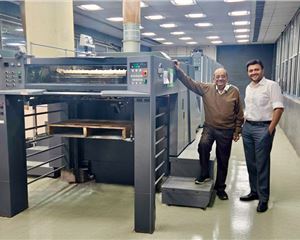Editorial: How Urdu dailies made a mark on India’s freedom
Pratap: A Defiant Newspaper traces the fearless journey of a family-run Urdu daily that stood firm through India’s freedom struggle, Emergency, and Punjab’s unrest—offering a rare glimpse into Urdu journalism’s bold legacy.
23 Jul 2025 | By Dibyajyoti Sarma
Pratap: A Defiant Newspaper penned by Chander Mohan and Jyotsna Mohan is a saga of a family-run Urdu newspaper that was born on the cusp of the Jallianwala Bagh massacre. This book, published by HarperCollins India, provides insights into print journalism’s integral role in the freedom struggle.
50 years ago, on 26 June, one of the first midnight knocks was at the Pratap office in Jalandhar. And that’s how the newspapers Pratap and Vir Pratap were censored during the Emergency. This is how Chander and Jyotsna highlight Pratap’s tradition and provide the reader a ringside view of events that unfolded when India fought for Independence, right up to the 1980s when Punjab was in the throes of terrorism.
The first issue of Pratap was printed on 30 March 1919, a fortnight before the Jallianwala Bagh massacre. This was a phase of history when, “Urdu was a distinctly inclusive language, uniting Hindus, Muslims, and Sikhs under its umbrella…Inquilab Zindabad, coined by Hasrat Mohani became the battle cry for freedom.”
Founded in Lahore by Mahashay Krishan, Pratap garnered a massive following. Its pages, which featured Vande Mataram, found readers among Muslims, Hindus, and Sikhs alike, demonstrating the publication’s widespread appeal and unifying message. Chander’s father Virendra was a revolutionary freedom fighter, and ideologically opposed to the non-violence advocated by Mahatma Gandhi. The activities of the revolutionary club led by Bhagat Singh and Chandrashekhar Azad, are recounted in great detail in Pratap. Since Virendra was privy to the plans to target British officers and even Governors, this book provides the reader with an insider’s view. Virendra was in Lahore jail where Bhagat Singh, Rajguru and Sukhdev were hanged on 23 March 1931. They had been accused of shooting an English police officer outside his office.
Through the 360 pages, one thing stands out. Pratap is unyielding in its commitment to the cause of independence. This unwavering stance, however, came at a cost. In 1929, Krishna faced imprisonment for six months after publishing a defiant editorial. Despite the censorship and personal sacrifice, Pratap resumed publication following his release, continuing its vital work. The bond between Krishna and senior freedom fighter Madan Mohan Malviya is noteworthy, with Malviya reportedly referring to Krishna as a “member of the army.” Krishna’s dedication to the Arya Samaj caste was also a significant aspect of his life and journalistic endeavours.
A significant portion of the book is spun through the eyes of Virender who got drawn into the revolutionary movement at a young age. He had nine stints of imprisonment before Independence, one of which coincided with the executions of Bhagat Singh, Rajguru and Sukhdev. The narrative of Pratap and Vir Pratap is interwoven with other significant moments in Indian history, including the Jallianwala Bagh massacre and the Lahore conspiracy case involving revolutionary figures Bhagat Singh, Rajguru, and Sukhdev, whose slogan Inquilab Zindabad echoed through its pages. The papers also covered the hunger strike of Jatindra Nath Das and Batukeshwar Dutt, highlighting the sacrifices made by the freedom fighters.
Post-1947, Pratap spoke truth to power and bore the brunt of its defiance during the Emergency. Having relocated to Jalandhar from Lahore during Partition, Pratap faced the music during the years of militancy in Punjab, refusing as it did to accept the diktats of the militants. However, it shut down in 1994 owing to a fall in Urdu readership. The corporatisation of the media forced Vir Pratap to wind up in 2017.
The legacy of Pratap extended for decades, with its responsibility continuing until 1999, cementing its place as a brave and revolutionary voice in the history of Indian journalism. Chandar and Jyotsna Mohan have done immense service by documenting Urdu journalism of this era. Pratap: A Defiant Newspaper is the biography of an Urdu newspaper that reminds us that journalism once stood tall and Urdu was the defining voice of the people.
Dibyajyoti Sarma is associate editor at PrintWeek and an award-winning publisher












 See All
See All